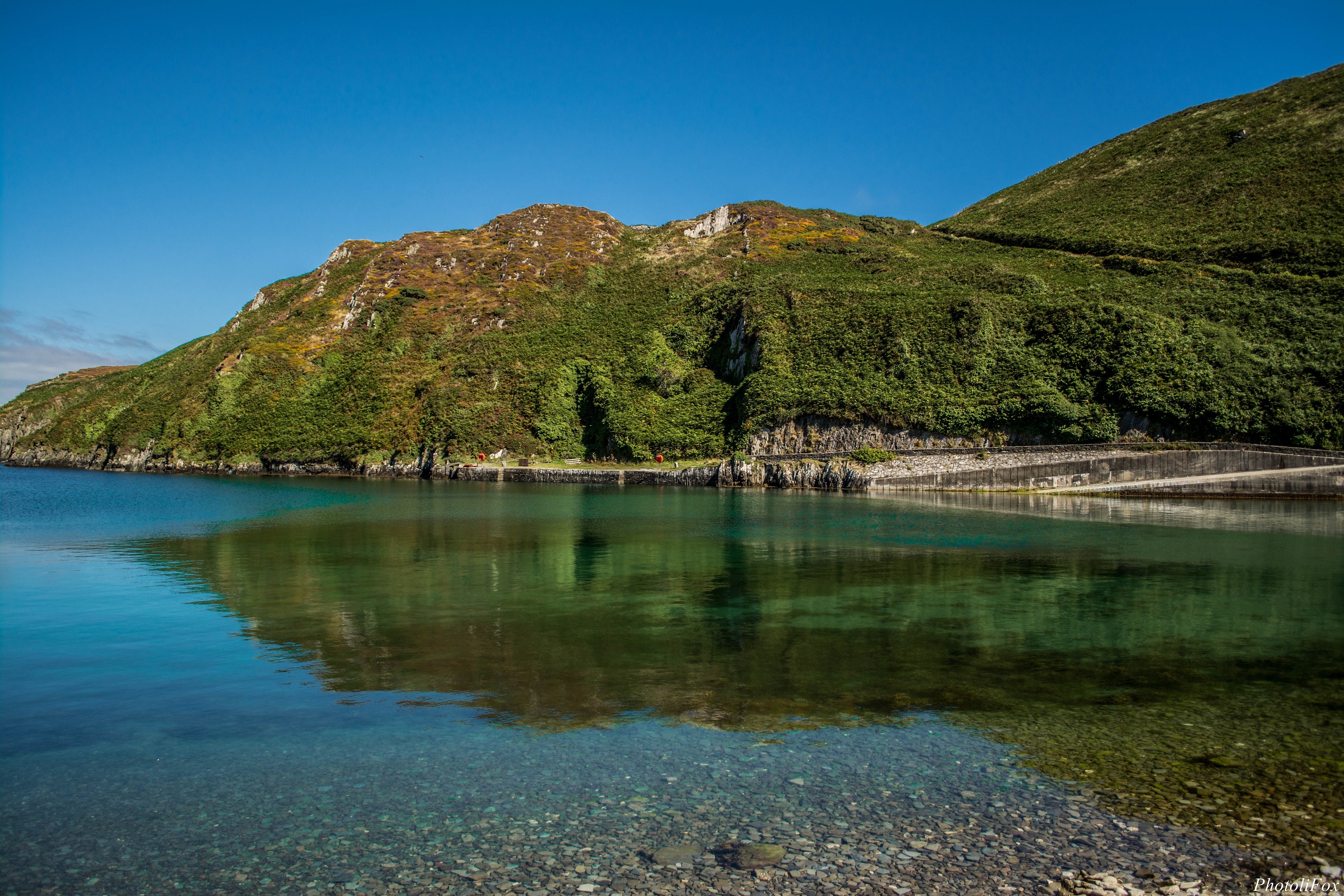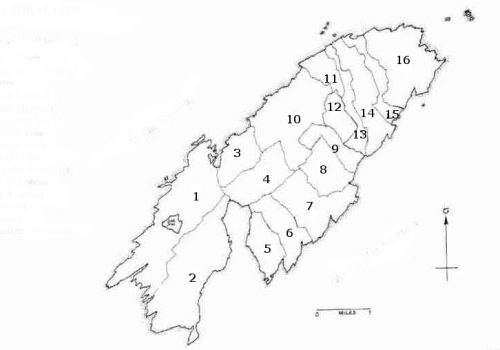
Townland Names

| No. | Townland Name | Abbr. | Description of Townland Name |
|---|---|---|---|
| 1 | Baile Iarthach Thuaidh | BIT | North-west townland or habitation. |
| 2 | Baile Iarthach Theas | BID | The south-west townland. |
| 3 | Cnocán an Choimhthigh | CC | A small hill named from an O’Cowhig, or the stranger or outsider who might have taken over land from an islander. |
| 4 | Coinlín | Cn | ‘Coinlín’, the Irish word for a stubble area, stubble being what is left of the corn in the ground following the harvest. |
| 5 | Gleann Iarthach | GI | West Glen. |
| 6 | Gleann Méanach | GM | Middle Glen. |
| 7 | Gleann Oirtheach | GO | East Glen. |
| 8 | Crathach Thiar | CTi | Perhaps, the boggy or marshy place, west and east, or the name may refer to the round shape of the most prominent hill in the area. |
| 9 | Crathach Thoir | CTo | Perhaps, the boggy or marshy place, west and east, or the name may refer to the round shape of the most prominent hill in the area. |
| 10 | Lios Ó Móine | LM | A ’Lios’ in Irish was an ‘enclosed area’ for the defence of a habitation site and enclosure for animals which many might call a “fort’. The remains of ‘a fort” was found there in the ninteenth century. The habitation is named from one named Mughain |
| 11 | Cnocán na mBairneach | CB | “Bairneach” is the Irish for limpets which cling to rocks. Perhaps a mound of limpets had built up into a mound on the hillside up from the sea, hence a translater probably recorded, ‘hillock of the limpets.’ |
| 12 | Cill Leice Fórabháin | CLF | Perhaps the burial place and ‘grave slab’ of one named Forabhán. |
| 13 | Gort na Lobhar | GL | The Irish word ’Lobhar’ can in speech mean afflicted, decay, decomposition of matter, rotten or worthless. Writers have translated this Irish name to mean’ the field of the leppers ‘implying that the area was used as a place of quarantine for those afflicted with contagious diseases. It could be that the land there was in time past “worthless, so much so that a crop of potatoes ‘ rotted’ there a number of times. This townland name would seem to have derived from a field within it it which still bears the same name. |
| 14 | An t-Ardghort | A | This is the name both of a townland and of a field within it. It is not clear which derives its name from the other but the meaning is clear -the high cultivated field. |
| 15 | Ceathrúna | Ca | ‘Ceathrúna’ / Quarters is a term used in land division. |
| 16 | Comalám | C | ‘Com’ in Irish is a hollow or depression in the land or a “Coombe”. There is a hollow between two hills in this area of the island /‘Oileán’, hence we have a descriptive name, ‘the hollow of the island’. |
| 17 | An Bhá Thuaidh | C | An Bhá Thuaidh is not a townland name but relates to that portion of Long Island Bay on the north side of Cape Clear. |
Clear Island Civil Parish Map Indicating the Location of Townlands No. 1 to 16 (Figs. 1-11)
